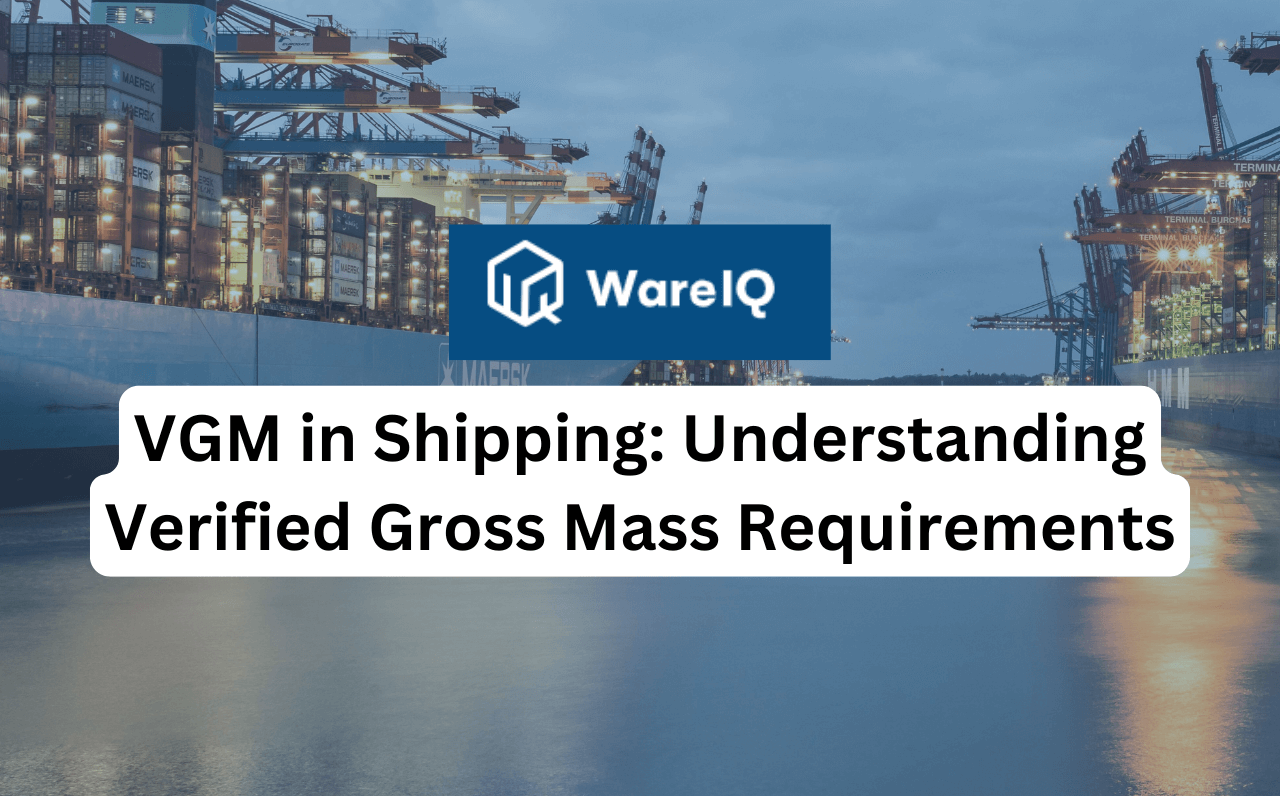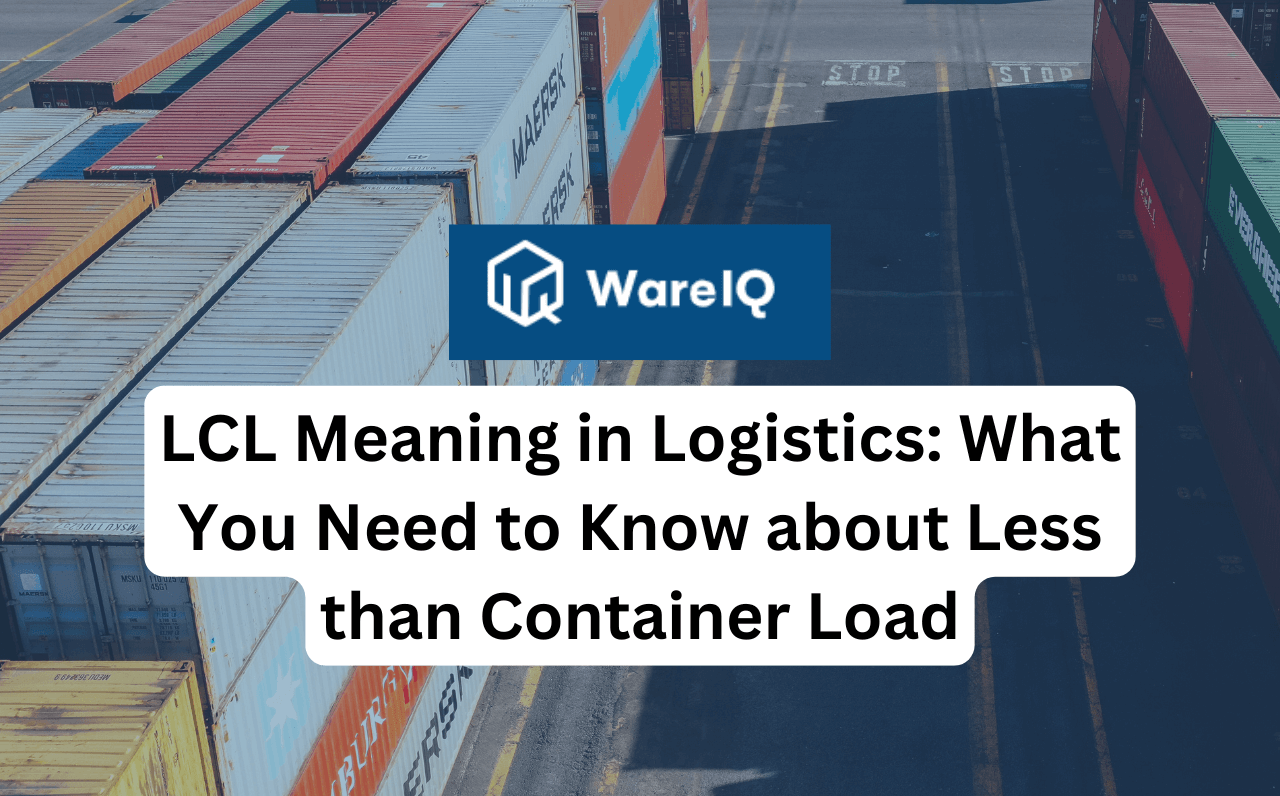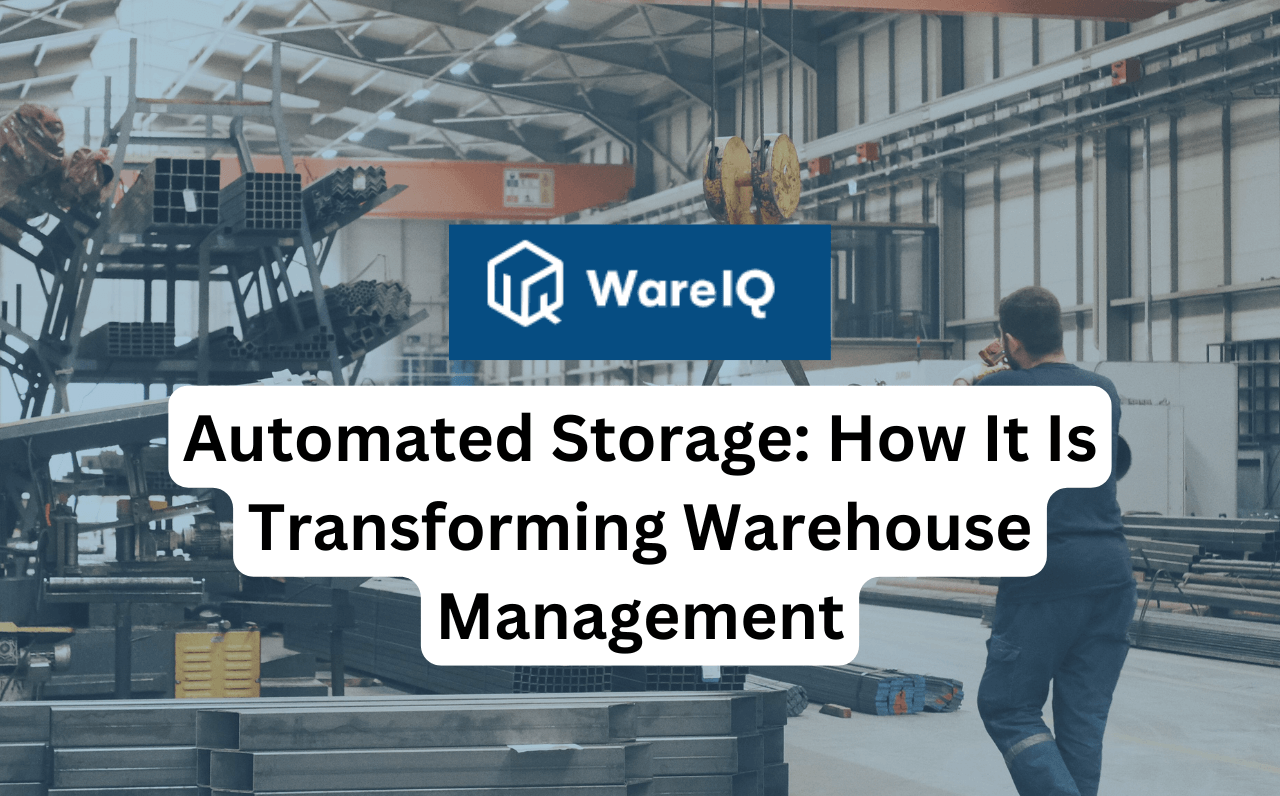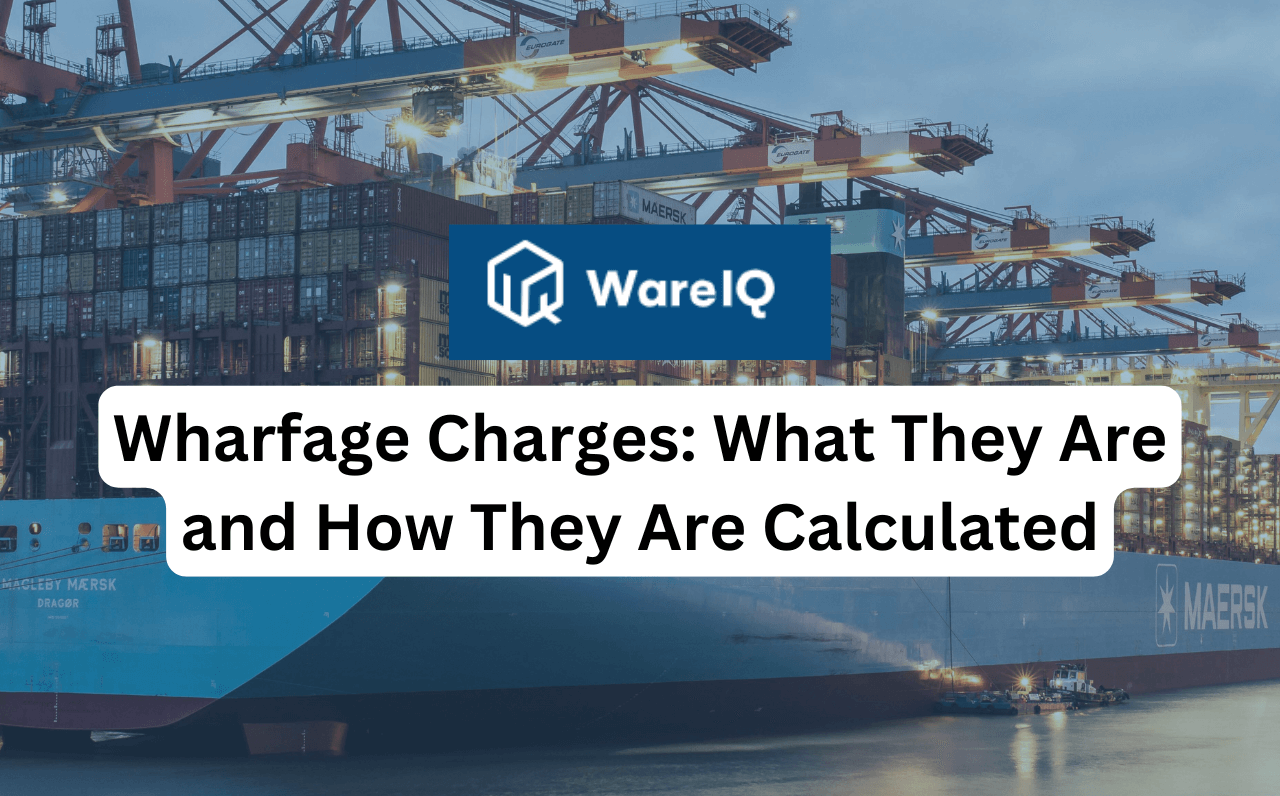
CNF Full Form in Export: What Does CNF Mean for Exporters?
India’s export sector is thriving, contributing over USD 450 billion annually to the economy, making it critical for exporters to master international trade terms. One such term is CNF, or Cost and Freight, which defines key responsibilities in shipping agreements. For Indian exporters and importers, understanding the CNF's full form in export is essential to streamline operations, manage costs, and ensure compliance with global trade standards.This blog provides a comprehensive guide to CNF in export, explaining its meaning, responsibilities, and significance in the Indian context. From comparing CNF with other Incoterms to addressing common queries, this article equips exporters, e-commerce sellers, and logistics professionals with practical insights to navigate CNF agreements effectively.What Is CNF in Export?CNF, or Cost and Freight, is an Incoterm (International Commercial Term) used in international trade to outline the responsibilities of the seller and buyer in a shipping agreement. The CNF full form in export stands for Cost and Freight, meaning the seller is responsible for the cost of transporting goods to the buyer’s designated port of destination. However, the risk transfers to the buyer once the goods are loaded onto the vessel at the port of origin, and the buyer handles insurance, unloading, and onwards transport costs.In India, CNF is commonly used in exports to markets like the Middle East, Southeast Asia, and Africa, where buyers prefer to manage import logistics themselves.CNF Meaning in IncotermsCNF, also known as CFR (Cost and Freight) in Incoterms 2020, is part of the International Chamber of Commerce’s (ICC) standardised trade terms. It specifies:Seller’s Responsibilities: Arrange and pay for transportation, including export clearance and freight costs, to deliver goods to the destination port.Buyer’s Responsibilities: Assume risk once goods are loaded onto the vessel, arrange insurance, pay for unloading, import duties, and transport from the destination port to the final location.For Indian exporters, CNF agreements simplify logistics by limiting their responsibility to freight arrangements, while buyers take on post-shipment costs.Why Is CNF Important for Exporters?CNF plays a vital role in India’s export ecosystem, offering clarity and efficiency in trade agreements. Its importance includes:Cost Clarity: CNF clearly defines which costs the exporter covers, helping set competitive pricing for markets like Dubai or Singapore.Risk Management: Transferring risk to the buyer at the port of origin reduces the exporter’s liability during transit.Simplified Logistics: Exporters focus on arranging freight, leaving import logistics to buyers, which is ideal for bulk shipments from ports like Mundra.Global Compliance: Adhering to Incoterms ensures smooth transactions and reduces disputes in international trade.How to Calculate CNF Price?Calculating the CNF price involves summing the costs the seller is responsible for under the agreement. The formula is:CNF Price = Cost of Goods + Export Packaging + Export Clearance Fees + Freight Charges to Destination PortSteps to Calculate:Cost of Goods: Determine the production or procurement cost of the goods (e.g., INR 500,000 for textiles).Export Packaging: Add costs for packaging suitable for sea transport (e.g., INR 20,000 for pallets and crates).Export Clearance Fees: Include costs for documentation and customs clearance (e.g., INR 10,000).Freight Charges: Calculate the cost of shipping to the destination port (e.g., INR 50,000 for a 20-foot container to Dubai).Example: For textiles worth INR 500,000, with packaging at INR 20,000, clearance fees at INR 10,000, and freight at INR 50,000, the CNF price is INR 580,000.Indian exporters must obtain accurate freight quotes from carriers like Maersk or MSC and factor in port-specific charges to ensure precise pricing.CNF vs. Other IncotermsUnderstanding how CNF compares with other Incoterms helps exporters choose the right term for their needs. Below is a comparison:IncotermSeller’s ResponsibilityBuyer’s ResponsibilityBest ForCNF (Cost and Freight)Covers the cost of goods, export clearance, and freight to the destination port. Risk transfers at the origin port.Insurance, unloading, import duties, and onwards transport from the destination port.Buyers who can manage import logistics (e.g., Middle East markets).CIF (Cost, Insurance, Freight)Same as CNF, plus arranging and paying for insurance during transit.Unloading, import duties, and onwards transport.Buyers seeking insurance coverage (e.g., high-value goods).FOB (Free on Board)Covers cost of goods and delivery to the origin port, with risk transferring once goods are on the vessel.Freight, insurance, unloading, and import logistics.Buyers with strong freight networks (e.g., Southeast Asia).Key Differences:CNF vs CIF: CNF excludes insurance, which the buyer must arrange, while CIF (Cost, Insurance, Freight) includes it, increasing the seller’s responsibility.CNF vs. FOB: CNF includes freight costs to the destination port, whereas FOB limits the seller’s responsibility to load goods at the origin port.CNF vs CFR: CNF and CFR are identical in Incoterms 2020; both terms are used interchangeably.CNF Shipping ProcessThe CNF shipping process involves clear steps for Indian exporters:Agreement: Include CNF terms in the sales contract, specifying the destination port (e.g., Jebel Ali, Dubai).Production and Packaging: Prepare goods with export-grade packaging to withstand sea transport.Export Clearance: Handle documentation (e.g., commercial invoice, packing list) and customs clearance at ports like JNPT.Freight Arrangement: Book shipping with a carrier, paying freight charges to the destination port.Risk Transfer: Once goods are loaded onto the vessel, the buyer assumes the risk and arranges insurance.Buyer’s Role: The buyer manages unloading, customs clearance, and transport from the destination port.Digital platforms like TradeLens or freight forwarders can streamline documentation and freight booking for CNF shipments.Common Mistakes to Avoid with CNFThe following are common errors exporters should avoid to ensure smooth CNF transactions:Misunderstanding responsibilities can lead to disputes over costs like unloading or insurance. Clearly define CNF terms in the contract and confirm with the buyer. Review Incoterms 2020 guidelines to align expectations.Inaccurate freight quotes result in underpricing or overcharging, affecting profitability. Obtain multiple quotes from carriers and factor in port charges. Use digital tools to track real-time freight rates.Neglecting documentation delays customs clearance and shipment. Ensure all documents, like the Bill of Lading, are accurate and submitted on time. Partner with experienced freight forwarders to avoid errors.Pro Tips for Managing CNF ExportsBelow are practical tips to optimise CNF export processes for Indian businesses:Negotiate freight rates with carriers like Maersk or CMA CGM to reduce CNF costs. Compare quotes and leverage long-term contracts for better pricing. This is especially effective for high-volume exports from ports like Chennai.Use digital platforms like Freightos or TradeLens to streamline freight booking and documentation. These tools provide transparency on rates and deadlines, minimising errors. Integrate them with your ERP for seamless operations.Communicate clearly with buyers to confirm their responsibilities, such as insurance and unloading. Share Incoterms details upfront to avoid misunderstandings. Regular updates during shipping build trust and ensure smooth handovers.Also check - CPT Incoterms: What Does CPT Mean in International Shipping?Enhance CNF Exports with WareIQ’s Logistics SolutionsNavigating CNF agreements can be complex, but WareIQ, a Y Combinator-backed e-commerce fulfilment platform, simplifies logistics for Indian exporters. WareIQ’s tech-driven solutions ensure compliance, cost efficiency, and seamless export operations.WareIQ’s key offerings include:Pan-India Fulfilment Network: Access fulfilment centres in over 12 cities, compliant with Seller Flex and FAssured, enabling efficient export preparation across 27,000+ pin codes.AI-Driven Inventory Management: Inventory LogIQ optimises stock placement and automates replenishment, ensuring accurate weight and packaging for CNF shipments.Multi-Channel Integration: Connect with D2C platforms (e.g., Shopify) and marketplaces (e.g., Amazon) for centralised order management, streamlining export documentation.Export Compliance Support: Automate customs documentation and track shipping deadlines, reducing errors in CNF processes.By partnering with WareIQ, exporters can master CNF agreements, minimise costs, and focus on scaling their global reach in competitive markets.ConclusionUnderstanding the CNF in full form in export—Cost and Freight—is crucial for Indian exporters to manage costs, responsibilities, and risks effectively. By mastering CNF Incoterms, exporters can streamline logistics, ensure compliance, and build trust with international buyers. From calculating CNF prices to avoiding common pitfalls, this guide equips businesses with the tools to succeed in global trade. With solutions like WareIQ, Indian exporters can optimise CNF processes and drive growth in markets worldwide.Also check - Mastering Incoterms in Logistics: Key Terms You Need to KnowFAQs About CNF in ExportHow to calculate the CNF price?The CNF price is calculated by adding the cost of goods, export packaging, clearance fees, and freight charges to the destination port. For example, INR 500,000 (goods) + INR 20,000 (packaging) + INR 10,000 (clearance) + INR 50,000 (freight) equals INR 580,000.What is the difference between CNF and CFR?CNF and CFR are identical terms under Incoterms 2020, both meaning Cost and Freight. They indicate the seller covers freight costs to the destination port, with the buyer responsible for insurance and onwards logistics.What does CNF mean on a train ticket?In the context of Indian Railways, CNF stands for “Confirmed”, indicating a reserved seat or berth on a train. It is unrelated to the shipping term and applies to ticket status, not export logistics.
October 21, 2025








